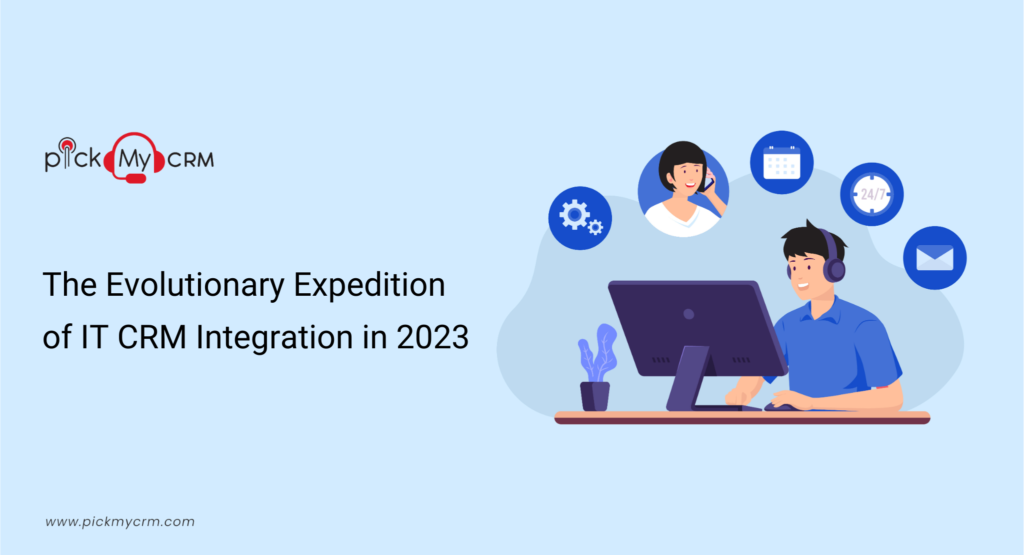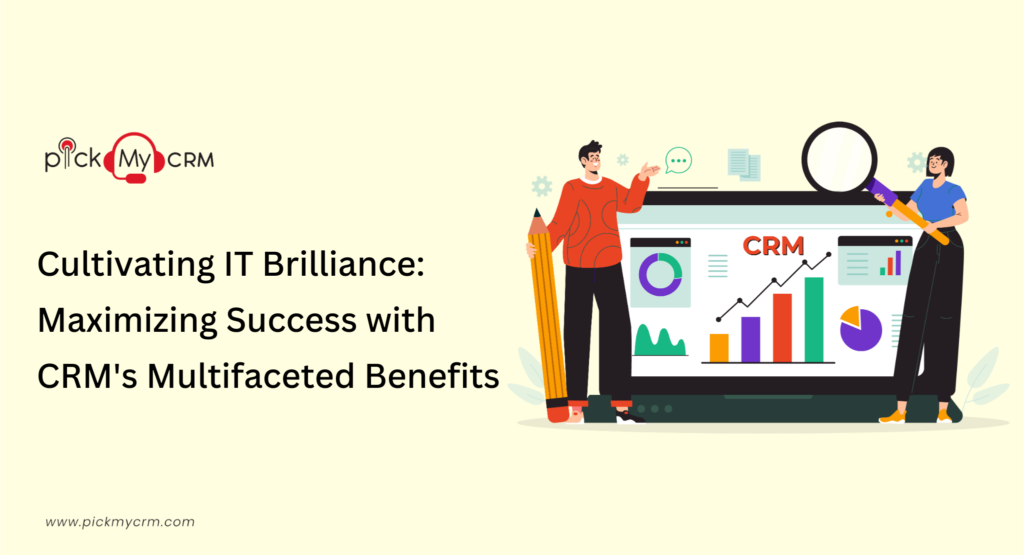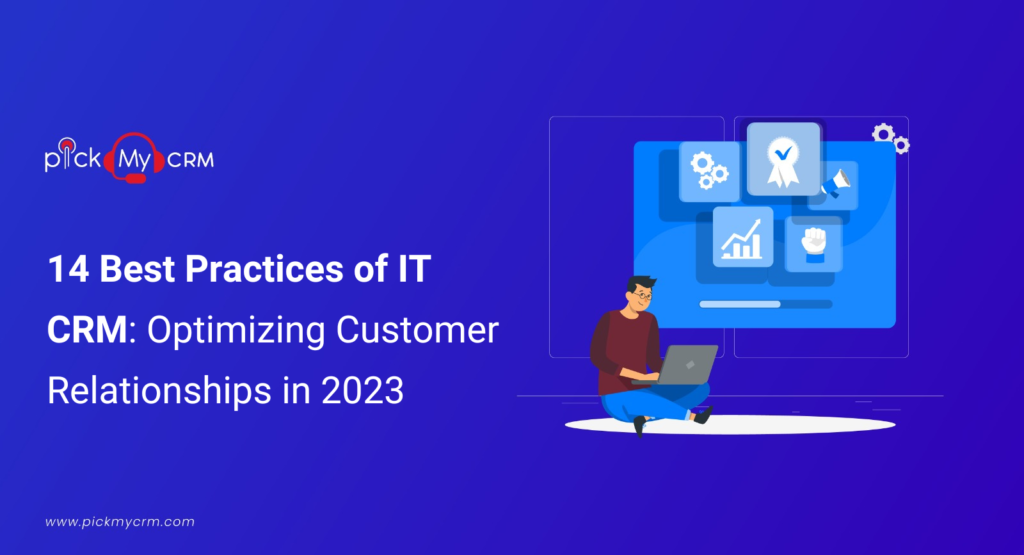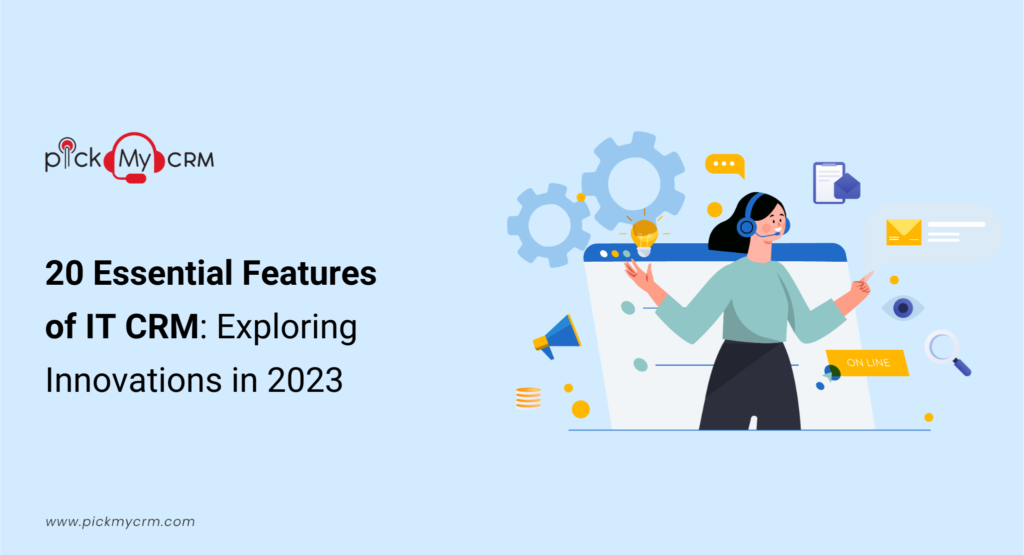The Evolutionary Expedition of IT CRM Integration in 2023
Understanding IT CRM Integration
CRM integration seamlessly merges customer data across touchpoints, forming the foundation for customer-centric operations. It streamlines processes, enhances customer experiences, and fuels business growth.The Early Days
During the early phases of CRM integration, it was predominantly limited to basic contact management systems. These systems served as digital Rolodexes, storing customer information for easy retrieval. The integration was rudimentary, limited to importing and exporting data, with little consideration for real-time updates or holistic insights.The Digital Revolution
With the advent of cloud computing and web-based applications, CRM integration underwent a paradigm shift. It evolved into a dynamic ecosystem capable of synchronizing data in real time. This shift allowed organizations to break down departmental silos and foster collaboration, leading to a unified view of customers.The Significance of IT CRM Integration
Enhanced Customer Experiences
One of the foremost benefits of CRM integration is its ability to provide a 360-degree view of customers. This in-depth understanding enables businesses to customize interactions, foresee requirements, and personalize experiences, elevating customer satisfaction and fostering loyalty.Operational Efficiency
Streamlining internal processes is another cornerstone of CRM integration. Through Task automation, Minimizing data redundancy, and optimizing workflows, Organizations can enhance efficiency, cut costs, and amplify productivity.Data-Driven Decision Making
In the age of big data, CRM integration equips businesses with invaluable data-driven insights. It allows for monitoring customer behaviors, preferences, and trends, facilitating well-informed decision-making and precision in targeted marketing efforts.Recent Statistics and Trends
Before diving into the intricacies of IT CRM integration, let's take a moment to understand the current landscape. Recent statistics highlight the growing significance of CRM integration:Rapid Adoption Rates
According to a report by, the Adoption of CRM systems with robust integration capabilities has witnessed a staggering 40% year-over-year increase. This surge signifies a growing recognition among businesses of the transformative potential of CRM integration.
Mobile Integration Dominance
In today's mobile-centric world, CRM systems are no exception. Recent trends indicate a shift towards mobile CRM integration, enabling sales and support teams to access critical data on the go. This shift has led to a 25% increase in productivity, as reported by.
AI and Automation Integration
Artificial Intelligence (AI) and automation are reshaping CRM integration. AI-driven predictive analytics are empowering organizations to make data-driven decisions, leading to a 30% boost in sales conversion rates, as per.
Strategies for IT CRM Integration Success: Here are 15 steps
Implementing the integration of IT with CRM systems involves a systematic approach to ensure a successful and seamless process. Here are 15 steps to guide you through the implementation process,Needs Assessment
Begin by Identifying your organization's specific needs and goals for integrating an IT CRM system. Determine what processes you want to improve, such as customer support, ticket management, incident tracking, and service delivery.Choose the Right CRM Platform
Select a CRM platform that aligns with your organization's requirements and IT infrastructure. When considering CRM systems, evaluate Factors like scalability, customization options, integration capabilities, security features, and user-friendliness.Data Mapping and Planning
Outline the data that requires sharing between your IT systems and the CRM platform. It encompasses customer profiles, service requests, incidents, tickets, communication history, and other pertinent information. Devise a comprehensive data flow strategy and define the synchronization method to deploy across interconnected systems.Integration Methods
There are various integration methods available, including,- API Integration: Most modern CRM platforms provide APIs (Application Programming Interfaces) that allow seamless communication between systems. It enables data to be exchanged in real time or at specified intervals.
- Middleware Integration: Middleware software can act as a bridge between your IT systems and the CRM platform. It can help manage data transformations, format conversions, and routing.
- Custom Integrations: For Intricate needs, custom integrations utilize programming languages and tools aligned with your organization's technology framework.
- Data Synchronization: Ensure consistent customer data across Platforms, Preventing data duplication and errors.
- Ticket and Incident Integration: Seamlessly link support tickets or incidents with customer profiles, enhancing issue tracking and resolution.
- Communication History Integration: Centralize communication history to facilitate better customer interactions and historical context for service agents.
- E-commerce Integration: Integrate CRM with your e-commerce platform to provide personalized shopping experiences based on customer behavior and purchase history.
Development and Configuration
Develop the necessary scripts, code, or configurations required for data integration. Ensure the precision of data mappings and the accurate execution of data transformations to uphold data integrity.Testing and QA
Conduct tests of the integration within a controlled environment before its production rollout. Verify the accuracy of data exchanges, assess system reliability, and ensure a smooth and seamless data flow between systems.Security Considerations
Security is paramount when integrating IT systems with a CRM platform. Implement encryption, authentication, and authorization mechanisms to safeguard sensitive customer data during transmission and storage.User Training
Provide training to relevant staff members who will be using the integrated system. Ensure they understand how to navigate the CRM interface, access customer data, update records, and utilize new features.Documentation
Create detailed documentation that outlines the integration process, includes data flow diagrams, and provides troubleshooting procedures. This documentation becomes a valuable resource for continuous maintenance and future enhancements.Monitoring and Maintenance
Regularly monitor the integrated system to identify any issues, discrepancies, or performance bottlenecks. Implement proactive maintenance to keep the integration running smoothly and to make necessary adjustments as your organization's needs evolve.Data Governance and Compliance
Ensure that data sharing and integration adhere to data privacy regulations, such as GDPR or HIPAA, depending on your industry and geographical location.Continuous Improvement and User Support
Collect feedback from users and stakeholders to identify areas of improvement in the integrated system. Regularly update and enhance the integration to meet changing business needs and technology advancements. Establish a dedicated helpdesk or support channel to Provide ongoing assistance to users encountering issues or seeking guidance on the integrated system's functionalities.Reporting and Analytics
Leverage the integrated system to generate insightful reports and analytics that can help your organization make informed decisions, improve customer service, and identify areas for growth.Feedback and Optimization
Collect input from users and stakeholders to pinpoint areas for enhancement. Use this feedback to optimize the integration, enhance user experience, and address any identified shortcomings.Scalability and Future Enhancements
Plan for scalability as your organization grows, accommodating potential additional integrations. Continuously evaluate and enhance the integration to align with evolving business requirements and technological advancements.12 Must-Have Integration of IT CRM
Integrating IT Customer Relationship Management (CRM) systems with various aspects of your organization's operations can significantly enhance efficiency, customer satisfaction, and decision-making. Here are must-have integrations for an IT CRM system,- Email Integration: Link CRM with email platforms to store conversations and communication history within customer profiles.
- Website Integration: Capture leads, track user behavior, and personalize experiences based on browsing history by integrating CRM with your website.
- Social Media Integration: Connect CRM to social media channels for seamless Management of Customer engagement, Interactions, and mentions.
- Marketing Automation Integration: Combine CRM with marketing automation tools to nurture leads, track campaign effectiveness, and tailor strategies.
- Sales Automation Integration: Streamline lead management, sales pipelines, and order processing for a seamless customer journey.
- Customer Support Ticket Integration: Centralize customer support by linking CRM with ticketing systems, enabling efficient issue resolution.
- E-commerce Integration: Integrate CRM with e-commerce platforms to monitor purchases and preferences and enable personalized marketing.
- Billing and Invoicing Integration: Manage customer billing information and payment statuses more effectively.
- Analytics and Reporting Integration: Generate insightful reports on customer behavior, sales trends, and service performance.
- Inventory Management Integration: Monitor product availability, order fulfillment, and stock levels for smoother operations.
- Project Management Integration: Improve coordination by integrating CRM with project management tools for tracking customer-related projects.
- Integration with ERP Systems: Connect CRM with ERP systems for a holistic view of customer interactions and streamlined order processing.
Challenges and Pitfalls of CRM Integration
Implementing CRM integration is a transformative endeavor, but It's not without its hurdles. Being Aware of these challenges can help you navigate the integration process more effectively.Data Security Concerns
- Centralized customer data poses a risk of security breaches.
- Recent incidents emphasize the need for robust security measures.
Integration Costs
- Initial integration costs can be substantial and may overrun budgets.
- Consider all expenses, including software, training, customization, and maintenance.
Data Quality Issues
- Inaccurate or outdated data can lead to flawed insights and operational inefficiencies.
- Implement data cleansing processes and data governance practices.
Compatibility and Integration Complexity
- Integrating CRM systems with existing infrastructure can be complex.
- Compatibility issues may arise, leading to delays and increased costs.
Resistance to Change
- Employees accustomed to legacy systems may resist the disruption caused by CRM integration.
- Effective change management, training, and clear communication are essential.
Scalability and Future-Proofing
- Ensure that your CRM system can scale to meet future business needs.
- Failure to plan for scalability may result in costly upgrades or migrations.
Lack of Executive Buy-In
- Top-level executive support is crucial for CRM integration success.
- Insufficient support can lead to resource constraints and integration failures.
User Adoption Issues
- User adoption is vital for realizing the benefits of CRM integration.
- Provide training, support, and feedback mechanisms to encourage adoption.
Customization Complexity
- Customizing your CRM system is Important, but over-customization can lead to complexity and maintenance challenges.
- Find the right balance to meet your organization's specific needs.
Vendor Reliability
- Select a trustworthy CRM vendor with a solid and proven reputation.
- Thorough due diligence minimizes the risk of vendor-related issues.




